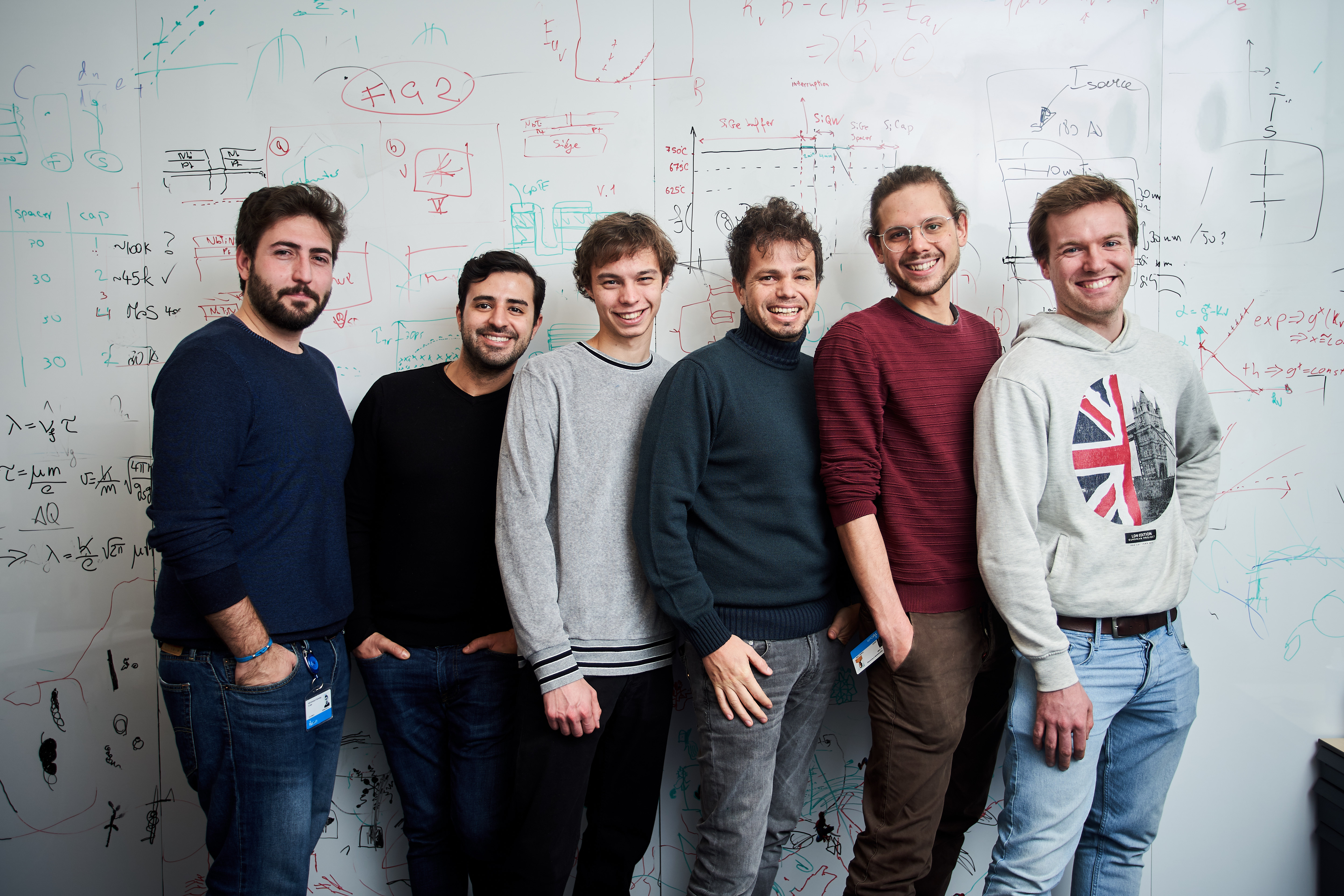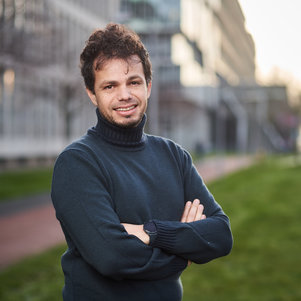When you set foot in the lab, you instantly feel that something special is happening here. The room houses a long desk with monitors showing graphs, but most of the space is taken up by two complicated-looking machines, surrounded by fences that keep guests at a safe distance. Papers are lying around, but even the desks themselves have been used as stationery, showing scribbled notes.
The author of the scribbles is Giordano Scappucci, group leader of the Quantum Materials Lab at QuTech (a collaboration of TU Delft and TNO). “I like to draw on tables. It’s a way of personalising the space, but it also helps the flow of ideas. I really like how, in my office, we made a whiteboard cover an entire wall,” he smiles. In his laboratory, he and his team work on the smallest building blocks of a quantum computer. He would be here all day if he could, working with his students, but he has to hold himself back; as group leader, he also has other work to do.
The foundation
Within QuTech, several research groups work together to develop a quantum computer. The Scappucci Lab works on the foundation of such a system. “If you think of a quantum computer as a stack, going from top to bottom, you have the software at the top, next the micro-architecture, the controller electronics and, finally, the qubit plane underneath it all. We are working on this plane”, Scappucci explains. “Today’s electronic devices, like your phone, are made out of billions of transistors. These work as tiny switches to let electricity flow through. Qubits work differently: they are more like an arrow in a sphere and can point up or down, or somewhere in between. For building a qubit plane, we would like to use the same materials that work well in transistors, hoping to leverage the technology of today for the quantum computer of tomorrow.”
After decades of research, scientists know a lot about the factors that make a good transistor. For qubits, however, this is in large part uncharted territory. “Because testing every possibility is impossible, we often have to go by our intuition. It requires a lot of creativity, for example when thinking of new designs for the materials platforms that support better qubits.”
Rolling dice
With all this uncertainty, each new experiment might feel like rolling the dice. Scappucci hopes that the future uses of quantum technology will have a more certain fate, “All new technology can be used for good or not so good purposes. With the potential of the Internet came the dark web, for example. Every now and then I stop to think about this, questioning my own responsibility and where to draw the line. I hope that we, as a community, take the societal implications of quantum technologies seriously. I am glad to see that there are now programs that deal with quantum and ethics, also at an EU level.”
Group work
Looking beyond his own work is Scappucci’s bread and butter. One of the most rewarding aspects of his research is bringing his ideas with the wider scientific community. “It starts with an idea, which you can then explore, but once you have developed it enough to publish it, others can use it. And that’s really the fun part. Because someone will want to use it for a different application and come back with a new idea, which gives you a new direction to look at in your research. This forces me to learn new things, which also gives me satisfaction.”
Collaboration is also necessary, Scappucci stresses: “With quantum technologies, you need so much different expertise. I don’t think being a one-man show is the best way to do this. Because that would mean that you’re doing it for yourself, right?” Instead, he gets his satisfaction from his group and the surrounding ecosystem. Just as rewarding is mentoring students. “First, when you see them take pride in their own work when they can experience the fulfilment of presenting their work to the outside world. What is even better, is when they start to measure up to you. When they become your equal and go off in another direction. Then you can get something back and learn from them.” This intellectual satisfaction, in his students as much as in himself, is what he enjoys most in his work. “Sure, it’s a job, but that moment of curiosity when something works and you make a jump in knowledge, a quantum leap, that’s what excites me still, and what keeps me going.”




